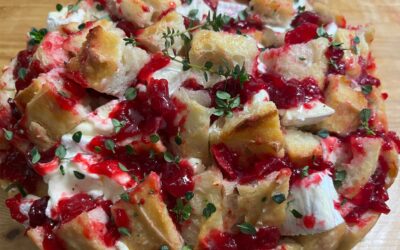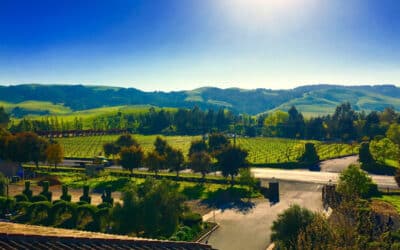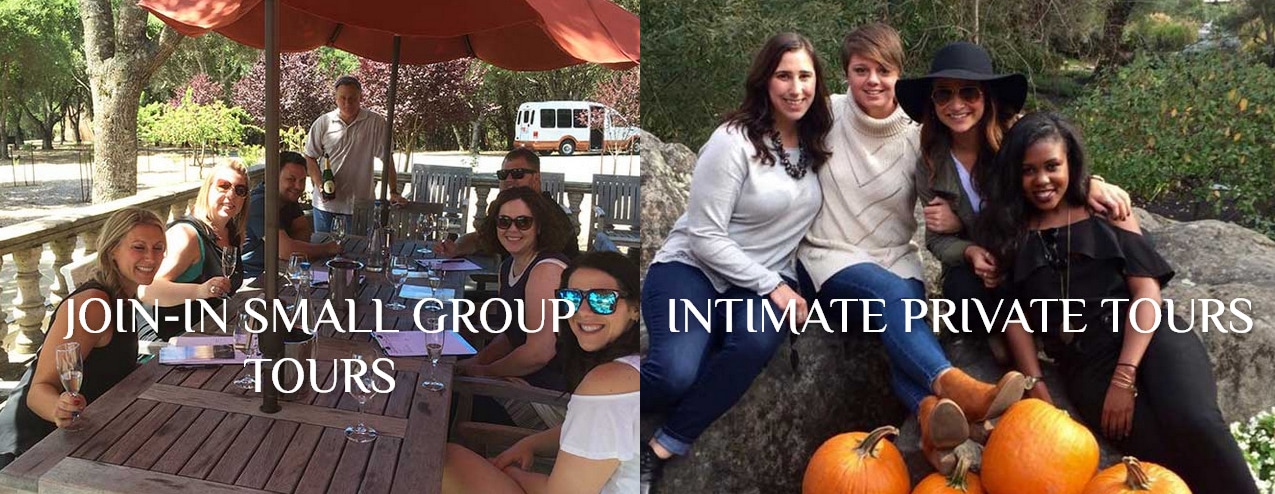Welcome to our Blog
EXPERIENCE WINE COUNTRY NEWS
How a Wine Tour Can Surprise You
From the unexpected to the unexplainable In the 20-year span of my wine career, I’ve witnessed some fascinating tendencies that I feel are worth noting. Most people expect a fun day—some wine, some pretty vineyards. That happens. But somewhere between the first...
Farmers’ Markets & Farm Stands of Napa and Sonoma
'Empty heading Before the wine, there was the land—and it’s still feeding more than just grapes. Napa and Sonoma are home to a thriving network of farmers’ markets and roadside stands, each one brimming with whatever’s freshest, ripest, and most delicious that week....
High Summer Shrub for Cocktails and Mocktails
Wait--What's a Shrub? Before "shrub" meant something leafy and low to the ground, it was a clever (and delicious) way to preserve fruit in early America. Traditionally made with fruit, sugar, and vinegar, these sweet-tart syrups were used in everything from mocktails...
The Benefits of Hosting Wine Tours for Corporate Gatherings
The Benefits of Hosting Wine Tours for Corporate Gatherings The best team-building experiences don’t feel like exercises—they feel like something worth remembering. Corporate wine tour excursions create the kind of relaxed, shared experience that naturally...
What You Wish You Knew Before Booking a Wine Tour (But Were Afraid to Ask)
What You Wish You Knew Before Booking a Wine Tour(But Were Afraid to Ask) Insider answers from the Platypus Tours crew to help you plan the perfect day in wine country. Empty heading You've booked a Napa or Sonoma getaway (cheers to that!) and you're...
Spring Fattoush Salad
Chef Cristina Topham layers texture and bold flavor in this springtime take on Fattoush—crisp za’atar-dusted pita chips, shaved fennel and radish, peppery arugula, and a vinaigrette that sings with pomegranate molasses and sumac. It’s herbaceous, tangy, and wildly...
Is Napa Worth It?
Is Napa Worth It? Napa Valley has long been synonymous with world-class wines, postcard-worthy vineyards, and a laid-back yet energizing atmosphere. But if you’re planning a visit in 2025, you might be wondering: Does Napa live up to the hype? The short...
Herbed “Beggar’s Purses” with Asparagus & Goat Cheese
Straight from the gardens of Sonoma and the heart of wine country hospitality—this fresh, seasonal dish from Executive Chef David Frakes of Lynmar Estate is pure springtime on a plate. It’s vibrant, elegant, and rooted in the kind of farm-to-table authenticity that...
Pairing Wine Tasting with Your Passions
Platypus Tours - Pairing Wine Tasting with Your PassionsWine country isn’t just about sipping and swirling—it’s an adventure waiting to be tailored to your passions. Whether you’re a history buff, foodie, music enthusiast, art lover, equestrian, film buff, outdoor...
Gluten Free Persian Love Muffins
Who needs a love potion when you have these gluten-free Persian Love Muffins? 💕🍰 Fragrant with cardamom and rose, they’re proof that the way to anyone’s heart is through a perfectly baked, love-filled treat! 🌿💫 Wine pairing: Reisling, Chenin Blanc, or...
THREE, It’s a magic number – How many wineries to visit in a day.
Why Three is the Magic Number for a Perfect Day of Wine Tasting We've been curating wine tours for 20 years and want to give you our experienced guidance. When planning your wine country adventure, one of the most important decisions you’ll make is how many wineries...
Avocado Toast with Truffle Salt
Shawnda here with Platypus Wine Tours sharing a beloved California recipe with a twist, avocado toast. The addition of earthy, roasted beet hummus along with the truffle salt makes for a rich, velvety culmination. I added micro-greens for a slight bitterness and...
Cozy, Fireside Wine Tasting Picks
There’s something so enchanting about winter in wine country—a time when the vines sleep and tasting rooms offer a warm, welcoming escape. Pair that with the tranquil glow of a warm fire and a glass of exceptional wine, and you have the perfect recipe for a...
Southern Caviar for New Year’s Day
Shawnda here with Platypus Wine Tours sharing my southern heritage and a tradition; eating black-eyed peas on New Year's day for good luck! The origin story of the tradition is debated: both versions are tied to Black history. Serves 8-10 as appetizer ...
Cranberry and Brie Pull-apart Sourdough
Recipe for Cranberry and Brie Pull-apart Sourdough Bread with Wine Pairing
Friendsgiving Fondue
Hey folks, Shawnda here with Platypus Wine Tours offering you an epic way to share good wine and food with those you love this Thanksgiving, and beyond. Celebrate Friendsgiving with this simple fondue recipe which is all about bringing friends together and is...
Top 6 Ghost Wineries of Wine Country
Many died, and some survived…divinely, creatively or illegally. Ghost wineries are those that carved their way through, or were resurrected after Prohibition (1920-1933). Some were granted special dispensation to make sacramental wine for the church. Others sold...
Calabaza en Tacha (Mexican Candied Pumpkin)
Recipe for Calabaza en Tach with suggested wine pairing of Petite Sirah


















